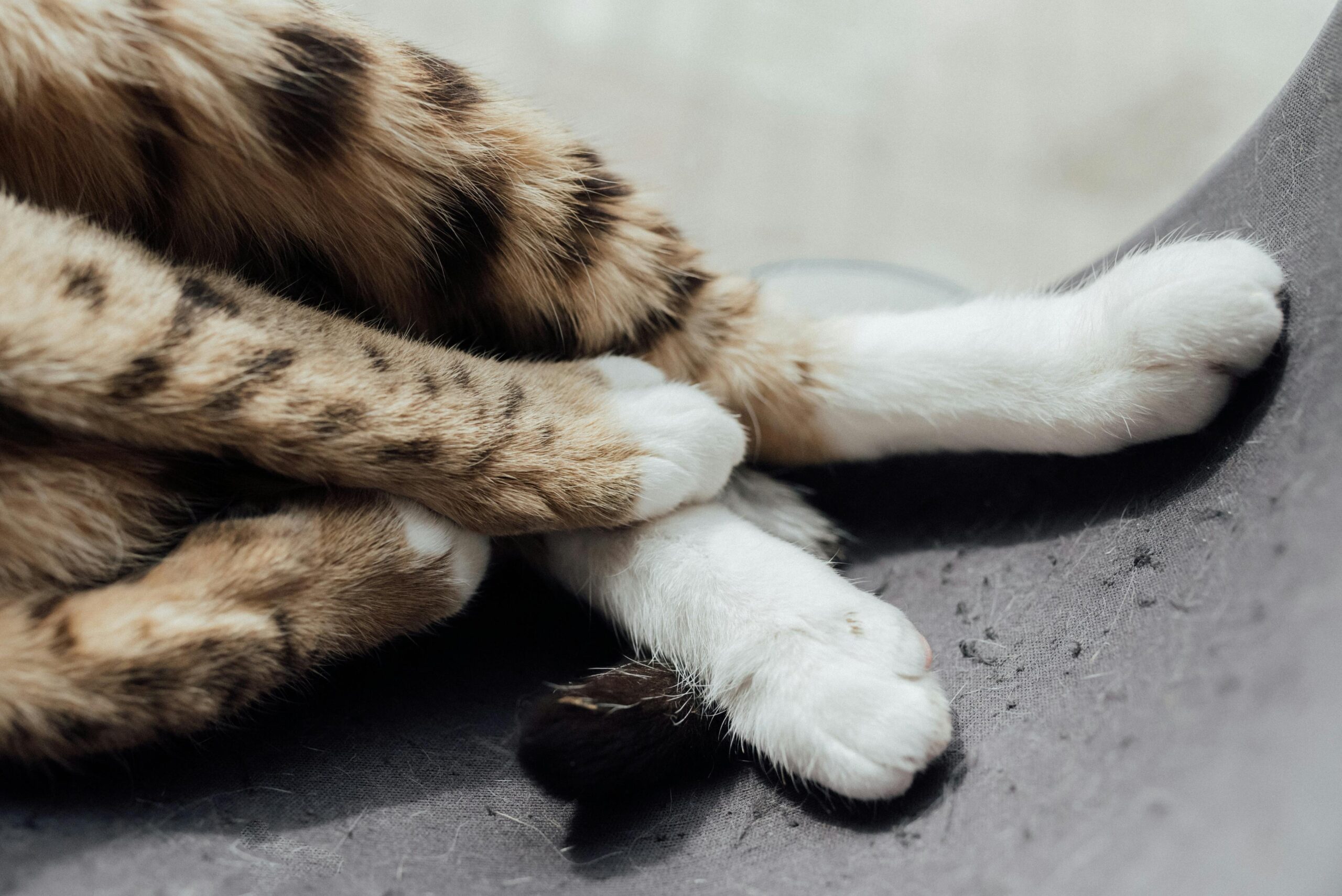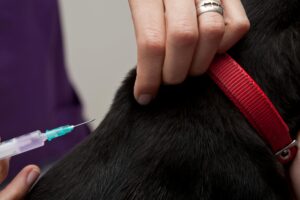It is really super important to care for our dog and cat paw as the pet parent, which can help in their overall health. Tammy Anderson Courtesy of Tammy Anderson Whether it’s the hot pavement in the summer, sharp objects on walking trails or indoor hazards such as broken glass, even indoor pets can get hurt every once in a while. This takes proper grooming to prevent their paws from becoming brittle or dry and the soles of their pads to crack, allowing them to maintain a healthy and active lifestyle.
In this guide, we will cover the anatomy of your pet’s paw pads and nails so you can understand what these parts do as well as how to prevent and handle common problems related to pads.
Understanding Your Pet’s Paws
The paw care process starts with understanding what your pet’s paws are made of. Paws for dogs and cats each consist of five primary parts —
- Digital pads: They include digital pads (on each toe, offering grip and cushioning).
- Metacarpal (or palmar) pad: The largest pad on the bottom of the paw, which bears more weight than the others.
- Carpal pad (dogs only): A much smaller pad high on the front legs corresponding to the stopper pad of carnivores. The carpal pad does not make contact with the ground, as most dogs walk on their toes.
- Claws: Dogs and cats have claws that, if not well kept, can cause discomfort or end up in disaster.
- Webbing (dog): A lot of dog breeds have webbed toes which are used to swim or help them walk on rough terrain.
Every one of these parts is vital to the way in which your buddy walks, runs, jumps and connects with the world. Caring for your pet’s paws is more than ensuring they stay comfortable — healthy paws are also critical to their movement and happiness.
Some common paw problems found in dogs and cats
Your pet uses its paws all day doing normal activities, so they gradually wear down. Potential common paw problems may be manifest as
1. Cracked or Dry Paw Pads
Exposure to harsh weather conditions, hot pavement, cold snow, or rough surfaces can lead to dry or cracked paw pads. This can be a source of pain and discomfort for your pet, especially if it is left untreated.
2. Burns from Hot Surfaces
Hot pavement, sand and other surfaces can burn your pet´s paws. Dogs are more prone to this because their feet have direct contact with these surfaces based on the way they walk. However, cats Can experience burns feet when they walk on hot surfaces such as kitchen counters or concrete outdoors.
3. Cuts, Scrapes, and Punctures
Common sharp objects your dog will stand onMITTED GLASS DRINKINGBOTTLE SCREW STONESTHORNS; These injuries may result in bleeding, infection or limping if they are left untreated.
4. Snow and Ice-Related Injuries
On the other hand, ice, snow and road salt can be harsh on your pet’s paws in cold climates. Their tiny paws can allow ice to lick between their toes, causing pain and salt and the chemical used in decong will irritate their skin and eventually cause burns.
5. Allergies and Irritations
Certain materials, scrubbers or toothpaste not good for your dogs health.Dogs and cats can have allergies to certain things including plants. Their licking or biting their paws can be an indication of environmental sources that are causing them irritation.
6. Overgrown Claws
As toenails grow out of control, they can curl and grow into the foot pad, causing pain while walking or even becoming ingrown injuring the dog and creating an infection that is painful. This may also make cats less likely to scratch in an acceptable manner, leading to behavior problems.
How To Take Care Of Your Pet Feet And Paws
There are a few things you can do to also keep your dog and cats paws healthy as well. So, what can you do to keep their paws in tip-top shape?
1. Regular Paw Inspections
Frequent paw checks are a good practice to get into. Check for wounds, swelling redness or debris between the toes. This helps you to avoid higher level complications by catching even the most basic of issues early on.
2. Keep Paw Pads Moisturized
Your pet toes have skin too, and just as your skin can dry out in extreme weather, so will their paw pads. Pet-safe moisturizer or balm: Cracked and dry pads are easily preventable with the right lotion. Avoid human lotions, these are harmful to animals There are many pet specific products that retain moisture and can help alleviate irritation in the paw pad area.
3. Extreme Weather Paw Protection
It is important to take care of the paws of your pet because weather conditions negatively affect their health. In this way you that it is best to get out and walk your dog during the cooler parts of the day such as early morning or late evening when in hot conditions, If the pavement is so hot that you cannot leave your hand on it it is too hot for your pets paws.
If your cat is an indoor/outdoor cat, you must keep them in the house during extreme heat to avoid burns. Booties will even protect your dog from ice, snow and road salts on winter walks, but make sure to wipe their paws down with a warm cloth when you get home to help remove any of these materials which may cause irritation.
4. Regularly Trimming Your Pets Claws
For both dogs and cats, regular nail trimming in essential. Even if they are not painfully curled under, overgrown nails can change your pets’ walking habits and end up leading to joint pain or even—gasp! —despite only being one-fifth of the total solution, arthritis. Cats’ claws are obviously for scratching and climbing so it is important to keep them a healthy length for their wellbeing as whole as well as their behavior. If you’re unsure about cutting their nails a groomer or vet can do it for you.
5. Buy Cats Scratching Posts
Cat owner may appreciate providing their feline friend with plenty of places to scratch so that these scratching post examples also keep the claw in check. Scratching posts not only sharpens their nails but it also helps in preventing overgrowth and ensures they won’t scratch your furniture or anything you have in your house.
6. Clean Between Toes
Sediments like dirt, rock, or grass can move around to the pads and interfere with the skin contact leading to irritation or likely infections. Cleaned between their toes and answered any questions you can do traveling with a soft, damp cloth and remove debris in your home after outdoor activities. Especially for Dogs that love to hike or walk on rough terrain.
Treating Common Paw Problems
Even after you try to prevent it, your pets’ paws may run into problems. Many of,the most common issues listed below can be treated at home; here are a few tips on how to address them.
1. Cracked or Dry Paw Pads
Be sure to use a moisturizing balm or cream that is designed for animals if your pet’s paws are dry or cracked. Make sure to keep them from licking this area—distract them as you would a pet puppy if you can, but consider using a cone of shame if necessary. Humidification of the air can also aid in preventing.
2. Burns
If the burns are minor, you can try holding the paw pads into a cold compress, or dipping the paw in cold water for a minute. Ice works like a numbing agent, but never apply the ice cubes directly on your skin. Seek veterinary help immediately: for severe burns
3. Cuts and Punctures
If your pet gets a cut, clean the wound with mild soap and warm water. This will help prevent the tear from getting worse. Apply antiseptic ointment and bandage the paw. Keep a close eye on it for signs of infection-like swelling, redness and anything coming out. If the injury seems severe, or has not healed up quickly — contact your vet.
4. Snow and Ice-Related Injuries
After any pet frolicking in the flashing snow, inspect their paws for stubborn ice beads between their toes! Clean irritated paws from salt/chemicals only — using a pet-safe cleanser OR warm water. When taking walks in snowy weather, apply paw wax in paws to prevent those items from causing any harm.
5. Allergies and Irritations
Excessive paw licking or biting: excessive paw licking or biting may indicate an allergic response in your dog Also figure out what the allergen might be new cleaning products, plants or surfaces. Your veterinarian may also perform allergy testing or prescribe medication to relieve the itching for your pet in the meantime.
6. Overgrown Claws
Trim Overgrown Claws… Plus/Petuvo Ariatization Remember not to cut too close to the quick, which is the blood vessel inside the claw. If you are uncertain about how to proceed, Have a groomer or vet show you how it is done so that you can do this yourself at home in the future.
When to See a Veterinarian
Problems are encouraged, like the frequent use of hands at home as opposed to experts See your veterinarian if:
- Your pet’s Paws are bleeding, & it does not stop after a few minutes of pressure
- Your pet either limping, or not walking.
- The paw looks infected or swollen (inflammation, pus, or an odor).
- Your pet acts painful when you touch their paws.
- A burn or injury is severe.
If left untreated, a minor issue can morph into a more serious condition that may require more invasive treatment.
Conclusion
Taking care of your dog’s and cat’s paws is an important role that you, as a pet owner, have to fulfill. Check their paws on a daily basis, keep their nails to the right length, and protect them from rough weather, that is how you keep your pet healthy and happy. If you still have any questions or concerns, do not hesitate to contact your local veterinary clinic for an in-person visit. The health of your pet paws is your responsibility, if to prevent and for the well-being if with follow up.




